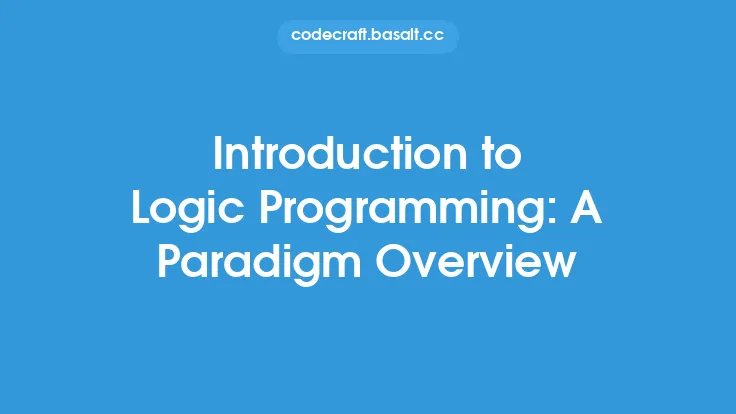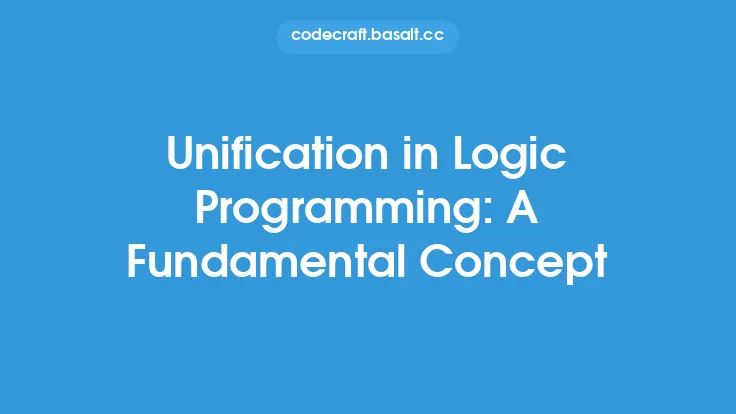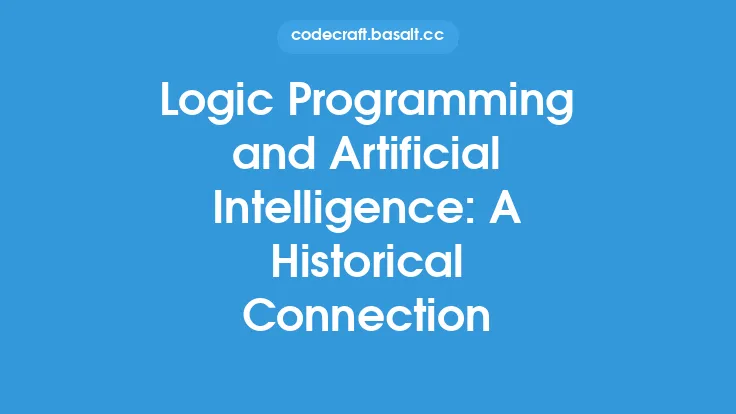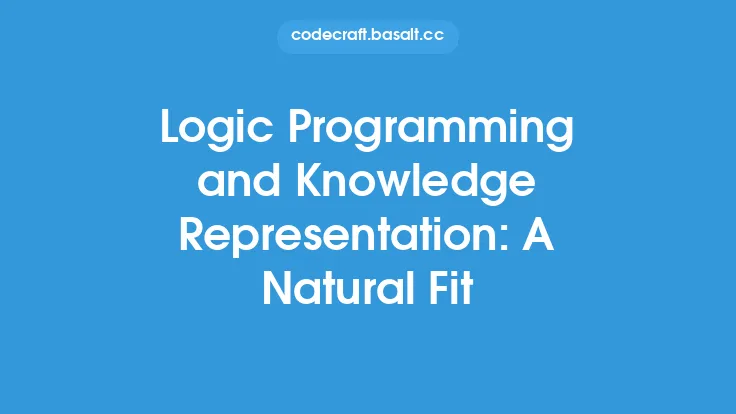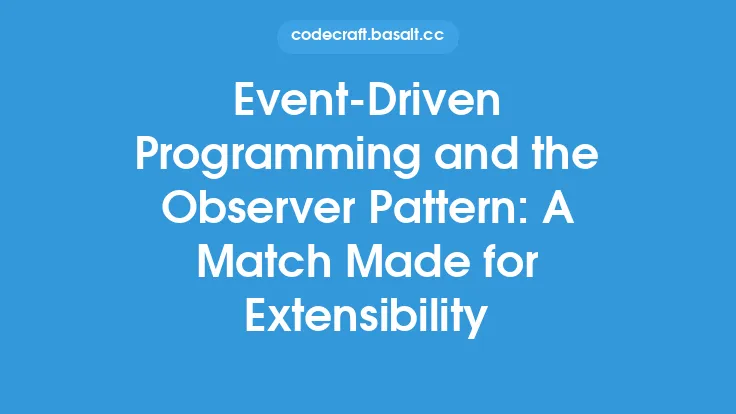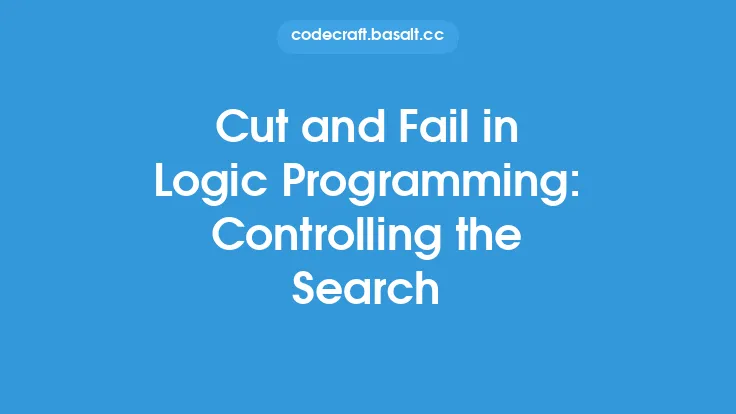Logic programming is a paradigm that has been widely used in various applications, including expert systems, which are designed to mimic the decision-making abilities of a human expert in a particular domain. Expert systems are a classic application of logic programming, and they have been used in many fields, including medicine, finance, and engineering. In this article, we will explore the concept of building expert systems with logic programming, and we will discuss the key concepts and techniques involved in this process.
Introduction to Expert Systems
Expert systems are computer programs that are designed to mimic the decision-making abilities of a human expert in a particular domain. They are typically used to solve complex problems that require a high level of expertise, and they are often used in situations where human experts are not available or are too expensive to consult. Expert systems are typically composed of a knowledge base, which contains a set of rules and facts that are relevant to the problem domain, and an inference engine, which is used to reason about the knowledge base and make decisions.
Knowledge Representation in Expert Systems
Knowledge representation is a critical component of expert systems, and it involves the use of logical formulas to represent the knowledge and rules of the problem domain. In logic programming, knowledge representation is typically done using a set of logical rules, which are used to define the relationships between different concepts and entities in the problem domain. These rules are typically represented using a logical language, such as Prolog, which provides a set of built-in predicates and functions for representing and manipulating logical formulas.
Rule-Based Reasoning in Expert Systems
Rule-based reasoning is a key component of expert systems, and it involves the use of logical rules to reason about the knowledge base and make decisions. In logic programming, rule-based reasoning is typically done using a set of logical rules, which are used to define the relationships between different concepts and entities in the problem domain. These rules are typically represented using a logical language, such as Prolog, which provides a set of built-in predicates and functions for representing and manipulating logical formulas. The inference engine uses these rules to reason about the knowledge base and make decisions, and it typically uses a technique called forward chaining or backward chaining to apply the rules and make inferences.
Forward Chaining and Backward Chaining
Forward chaining and backward chaining are two techniques that are commonly used in expert systems to apply the rules and make inferences. Forward chaining involves starting with a set of facts and using the rules to make inferences and derive new facts. Backward chaining, on the other hand, involves starting with a goal or hypothesis and using the rules to make inferences and determine whether the goal or hypothesis is true. Both techniques are useful in different situations, and they are often used together to solve complex problems.
Building Expert Systems with Prolog
Prolog is a popular logic programming language that is widely used for building expert systems. It provides a set of built-in predicates and functions for representing and manipulating logical formulas, and it has a built-in inference engine that can be used to reason about the knowledge base and make decisions. To build an expert system with Prolog, the developer must first define the knowledge base, which involves representing the rules and facts of the problem domain using logical formulas. The developer must then use the inference engine to reason about the knowledge base and make decisions, and this typically involves using forward chaining or backward chaining to apply the rules and make inferences.
Advantages and Disadvantages of Expert Systems
Expert systems have several advantages, including the ability to mimic the decision-making abilities of a human expert, the ability to solve complex problems, and the ability to provide explanations for their decisions. However, they also have several disadvantages, including the difficulty of representing complex knowledge and rules, the difficulty of reasoning about the knowledge base, and the potential for errors and inconsistencies in the knowledge base. Despite these disadvantages, expert systems remain a popular and powerful tool for solving complex problems, and they continue to be widely used in many fields.
Real-World Applications of Expert Systems
Expert systems have been used in many real-world applications, including medicine, finance, and engineering. In medicine, expert systems have been used to diagnose diseases, develop treatment plans, and provide medical advice. In finance, expert systems have been used to analyze financial data, make investment decisions, and provide financial advice. In engineering, expert systems have been used to design and optimize systems, troubleshoot problems, and provide technical advice. These are just a few examples of the many real-world applications of expert systems, and they demonstrate the power and flexibility of this technology.
Conclusion
Building expert systems with logic programming is a classic application of this paradigm, and it involves the use of logical formulas to represent the knowledge and rules of the problem domain. Expert systems are typically composed of a knowledge base and an inference engine, and they use rule-based reasoning to make decisions and solve complex problems. Prolog is a popular logic programming language that is widely used for building expert systems, and it provides a set of built-in predicates and functions for representing and manipulating logical formulas. Despite the advantages and disadvantages of expert systems, they remain a powerful and popular tool for solving complex problems, and they continue to be widely used in many fields.
